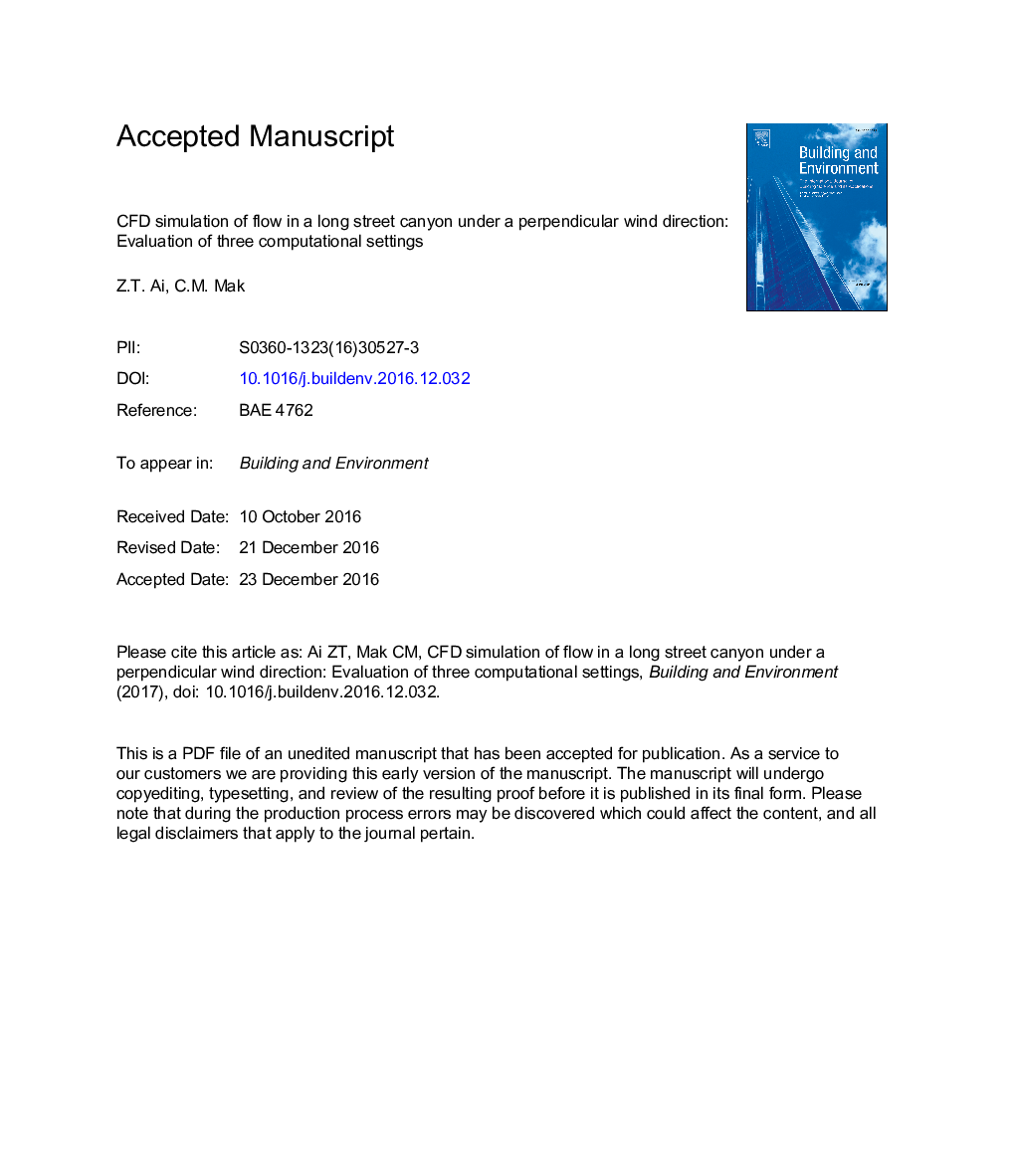| Article ID | Journal | Published Year | Pages | File Type |
|---|---|---|---|---|
| 4917426 | Building and Environment | 2017 | 24 Pages |
Abstract
A street canyon is an important platform for the understanding of local atmospheric flow and other related processes in the built environment. Many previous studies focused on long street canyons under a perpendicular wind direction, as they represent the worst street canyon microclimate, such as stagnation of wind and accumulation of pollutants. While CFD simulations were widely applied to investigate atmospheric processes in street canyons, appropriate computational settings are important factors influencing the predictive reliability. A non-exhaustive literature review of CFD studies on atmospheric processes in long street canyons indicates an arbitrary selection of three important computational settings, namely computational domain configuration, domain dimensions and inflow boundary conditions. Based on previous water tunnel experimental data for street canyons with aspect ratio equal to 0.5, 1.0 and 2.0, this study evaluates the influence of the three computational settings on CFD prediction of isothermal flow field inside the street canyons. Flow field inside an urban street canyon cannot be reasonably predicted using an isolated street canyon included in a conventional computational domain, which, however, can be well predicted using a T-shape computational domain where a street canyon is connected to a free flow layer above the canyon. A T-shape domain with the upstream length, downstream length and height above a street canyon all equal to the height of the street canyon is appropriate when considering both computational cost and predictive accuracy. It is reasonable to use uniform inflow boundary conditions to represent the free layer above street canyons.
Related Topics
Physical Sciences and Engineering
Energy
Renewable Energy, Sustainability and the Environment
Authors
Z.T. Ai, C.M. Mak,
